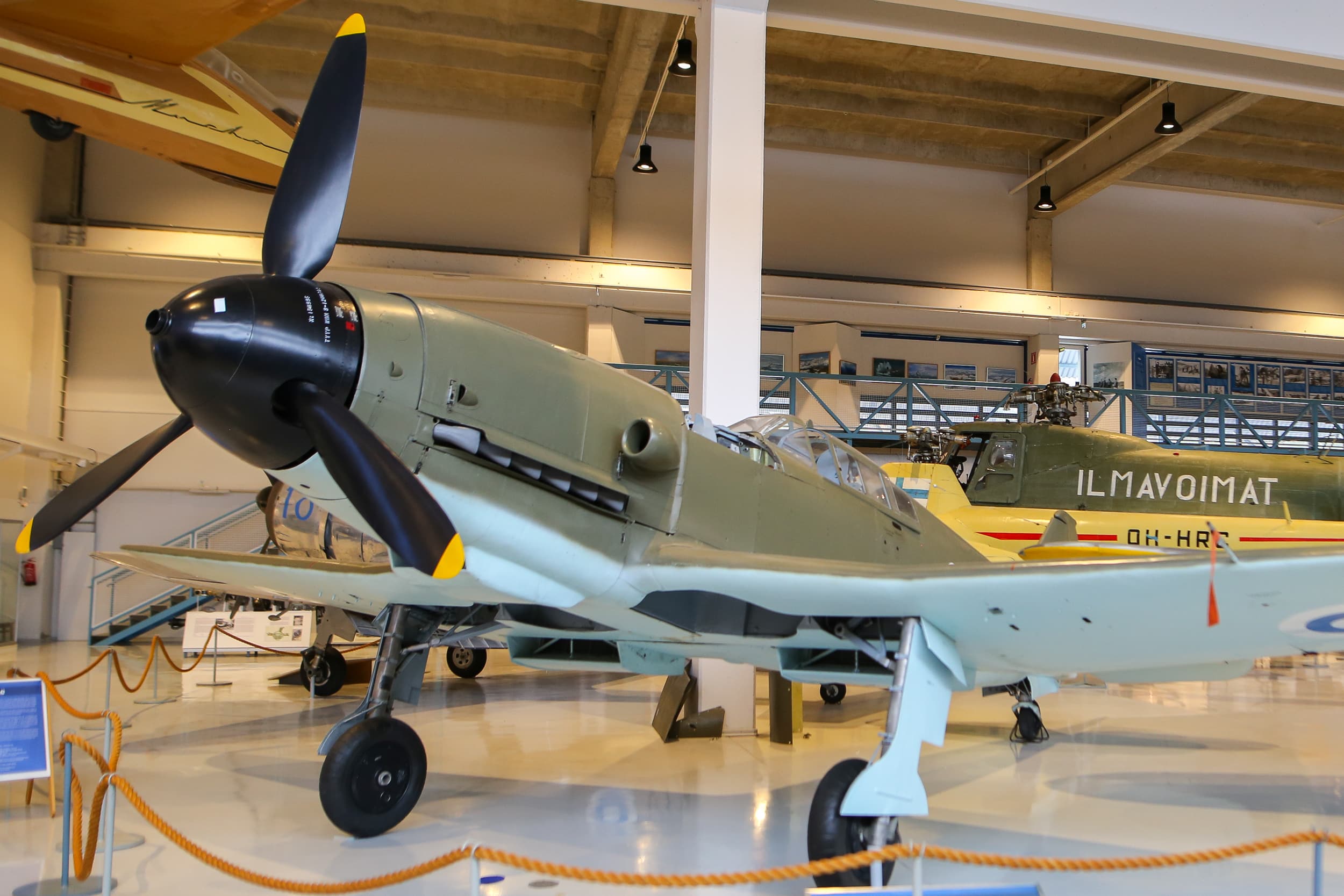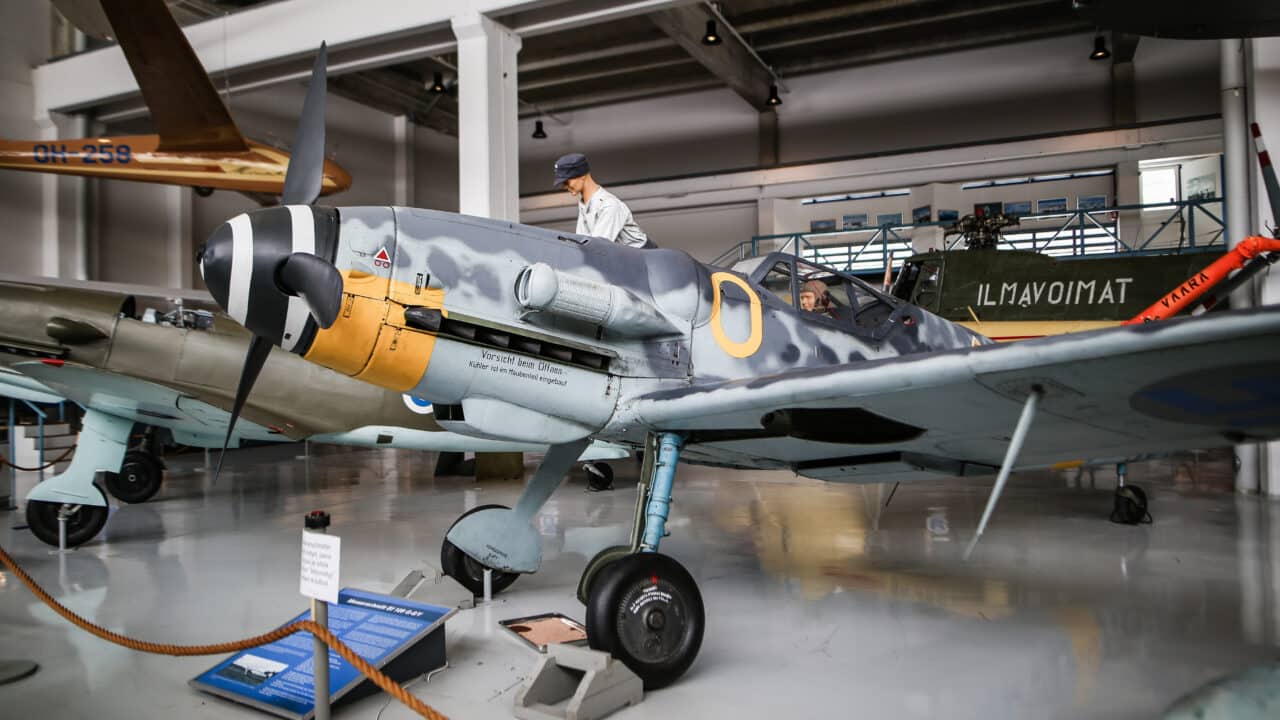The Pyörremyrsky (“whirlwind”) is a Finnish low-wing, single-seat fighter. The forward fuselage is of steel tube structure covered with aluminium skin. The rear fuselage and wings are made of wood. The State Aircraft Factory began development work on the Pyörremyrsky in 1942. The goal was to achieve the performance of the Messerschmitt Bf 109G combined with better manoeuvrability. Another aim was to make maximum use of domestic raw materials ‒ that is, wood. The Pyörremyrsky was designed to use the DB 605 engine familiar from the Bf 109.
The State Aircraft Factory designed five variants of the new fighter, and the Air Force ordered two prototypes in April 1943. The order for the second prototype and serial production aircraft was later cancelled since enough fighters had been acquired from abroad during the war and a new fighter like the Pyörremyrsky was not considered necessary. One prototype was, however, completed ‒ perhaps out of curiosity to know if the design that had required over 65,000 manhours was successful. The first flight of the Pyörremyrsky was made in Tampere in November 1945.
However, the test flights indicated clearly that the design goals had been achieved: the Pyörremyrsky’s performance was similar to that of the Bf 109, and the aircraft was slightly more agile. Although the wooden airframe was heavier than the metal structure of the Bf 109, the Pyörremyrsky was more manoeuvrable thanks to its larger ailerons. The wide-track main landing gear made the type easier to steer on the ground.
The Pyörremyrsky has sometimes been inappropriately called “wooden Bf 109”. In fact, only the engine and propeller and the main weapon were of the same type as in the Bf 109 ‒ otherwise the aircraft was a completely domestic design and differed in many respects significantly from the German fighter. Although the Pyörremyrsky never went into serial production, its design effort was not wasted; for example, the aerodynamic design of the wing as applied as such in the Vihuri trainer built by Valmet in the 1950s.
Link copied!
Additional info
Operating time
1945
Manufacturer
State aircraft factory, Finland
Measurements
Wing span 10.38 m; Maximum speed 620 km/h; Length 9.25 m; Altitude 3.86 m.
Type
Low-wing, single-seat fighter
Object number
314
Location
Main exhibition



